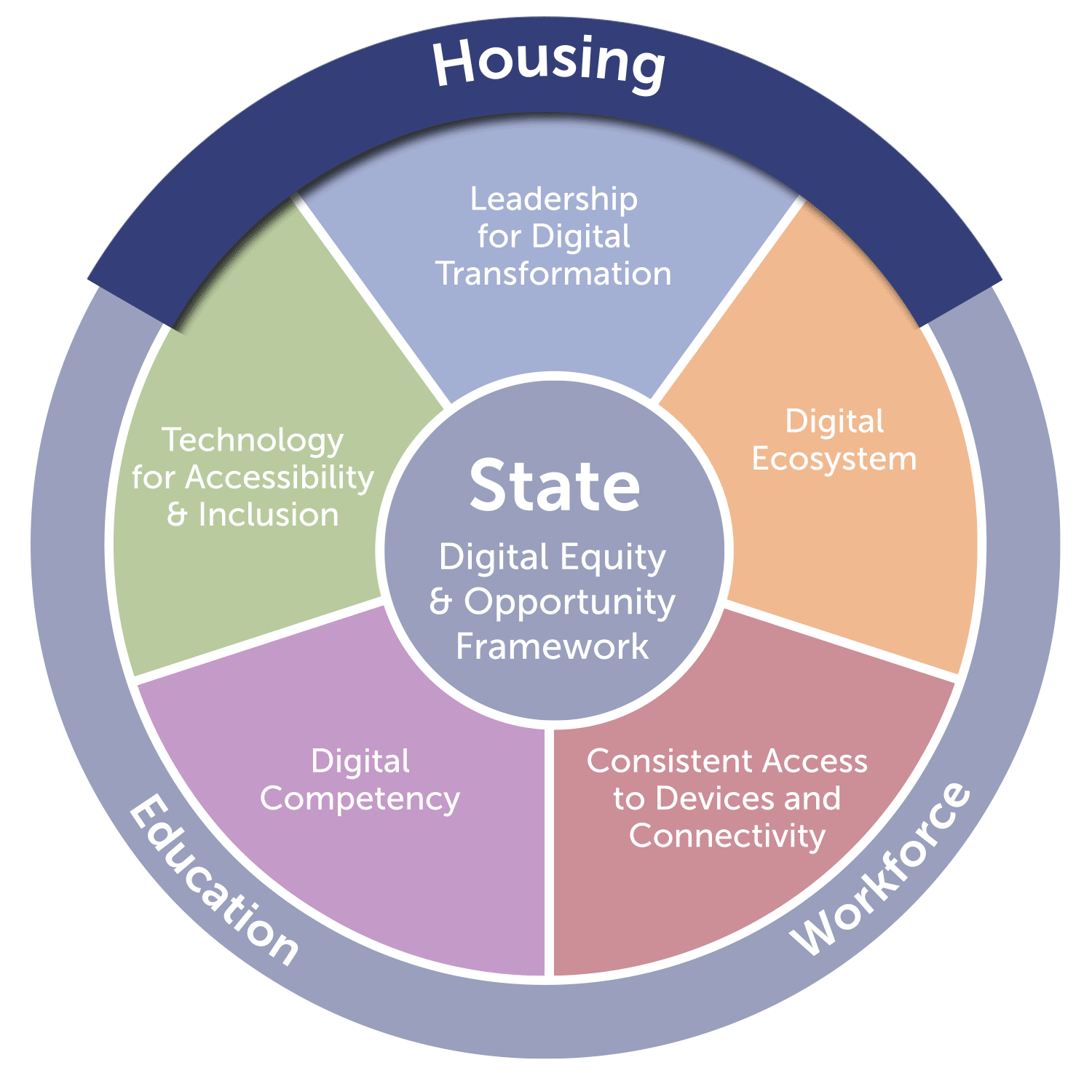Operation Connectivity (OpCon) is a statewide initiative in Texas launched in May 2020 by Governor Greg Abbot, Texas Education Agency (TEA), the Texas Legislature, and Dallas Independent School District (DISD) to provide reliable internet access and digital devices to 5.5 million public school students in Texas, ensuring that all students could participate in remote and blended learning.
According to Census.gov, Texas has a population of approximately 30 million people, making it the second-most populous state in the United States. Texas’ key demographic groups include 39.3% Hispanic or Latino, 39.7% Non-Hispanic White, 12.2% African American, 5.4% Asian and 0.3% Native American.In Texas, there are 5.5 million public school students, of which 57 percent are eligible for free or reduced lunch. This high percentage of students on free or reduced lunch often come from families with income at or below 185 percent of the federal poverty levels.
Operation Connectivity aimed to overcome the barriers of inadequate device availability, insufficient internet connectivity, and economic constraints that disproportionately affected students in rural and low-income households. By providing comprehensive solutions, including free high-speed internet, affordable digital devices, and digital literacy support, Operation Connectivity sought to bridge the digital divide and ensure that all Texas students could continue their education without disruption during the COVID-19 pandemic.
Operation Connectivity exemplifies key aspects of the State Digital Equity and Opportunity framework. Its success was driven by activating the Education and Housing Sectors, ensuring 1:1 device distribution at schools and free broadband internet for unserved and underserved student households. The Leadership for Digital Transformation domain was evident through collaboration between the governor’s office, the State Education Agency, Dallas ISD, and various private and public entities. This partnership developed plans, procedures, and creative funding initiatives to provide Consistent Access to Devices and Connectivity for Texas’ 5.5 million public school students.
 Education
EducationOperation Connectivity took a three-phase approach during the COVID-19 pandemic and thereafter to provide affordable digital devices and high-speed home internet to students and their families. The initial stage of the project involved a task force of leaders from various state, local, educational, and community-based organizations, as well as private businesses to develop a short- and long-term plan for digital access and connectivity for 5.5 million students in Texas.
Phase 1: Bulk Purchase and Reimbursements May 2020–February 2021
The OpCon team, led by Grow Associates, conducted a state-level asset mapping exercise to determine the device and resource gaps in school districts across Texas. To enact a Statewide Device Distribution Program, funding was secured through federal, state, and local sources, including the Coronavirus Aid, Relief, and Economic Security (CARES) Act, and allocated to purchase new devices through a bulk-purchase program. Reimbursement programs were initiated for qualifying districts that had purchased devices on their own.
 Housing
HousingPhase 2: TEA Connect Texas (TEACT) January 2021–December 2023
This phase started with the development of broadband maps to identify areas lacking high-speed internet connectivity. Furthermore, through the Affordable Broadband Initiatives for Families, TEACT negotiated pricing and terms of use with internet service providers (ISPs) and leveraged state funding through the Emergency Connectivity Fund (ECF) program to drive broadband adoption by unserved and underserved families at no cost to them. The program covered up to $400 for a connected device (such as a laptop or tablet) and up to $250 for a WiFi hotspot. Lastly, TEACT promoted the adoption of the Affordable Connectivity Program (ACP) to unserved and underserved households, which subsidized the cost of high-speed internet, including for Tribal communities. The program offered $30 per month for eligible households, up to $75 per month for households on qualifying Tribal lands, and a one-time discount of $100 for laptops, desktops, or tablets.
Phase 3: Infrastructure Development and Adoption
OpCon engaged counties, municipalities, and local agencies to design and construct new broadband infrastructure in unserved communities. The program leveraged federal programs such as the Coronavirus Capital Projects Fund (CCPF) and the Broadband Equity, Access, and Deployment (BEAD) program.
At the onset of COVID-19, 900 of the 1,200 school districts in Texas were thrown into a frenzy as they grappled with ways to provide 1:1 learning devices, hotspots, and fixed broadband internet at home for 5.5 million students to enable them to continue learning remotely. Operation Connectivity leveraged Inclusive Innovation in a fast-paced solution that began with the formation of a statewide task force to assess the situation and develop a plan. This included asset mapping to determine the need, securing funding, procuring and distributing devices, and providing ongoing support. The work of Operation Connectivity ensured that school districts received the necessary funds and support to purchase devices at discounted prices, and that students received reliable devices and connectivity to communicate effectively with their teachers and collaborate with their peers online.
Through this multifaceted strategy, Operation Connectivity equitably distributed 4.5 million devices to K-12 students in Texas’ underserved communities and successfully increased high-speed internet accessibility through trust and acceptance. The program:
These programs were funded through federal grants launched as one-time initiatives to close the digital divide. Since these were not evergreen sources of funding, a new gap emerged when the programs ended due to the ongoing need to update devices and maintain connectivity.
This gap can be managed or prevented through the guidance of the state Digital Equity and Opportunity Framework, which calls for states to: Budget for Educational Devices and Connectivity – Provide evergreen funding to educational institutions, especially in underserved areas, to upgrade their student learning devices and internet infrastructure, ensuring students are equipped with up-to-date devices and schools have high-speed, reliable connectivity to support student learning in school environments.